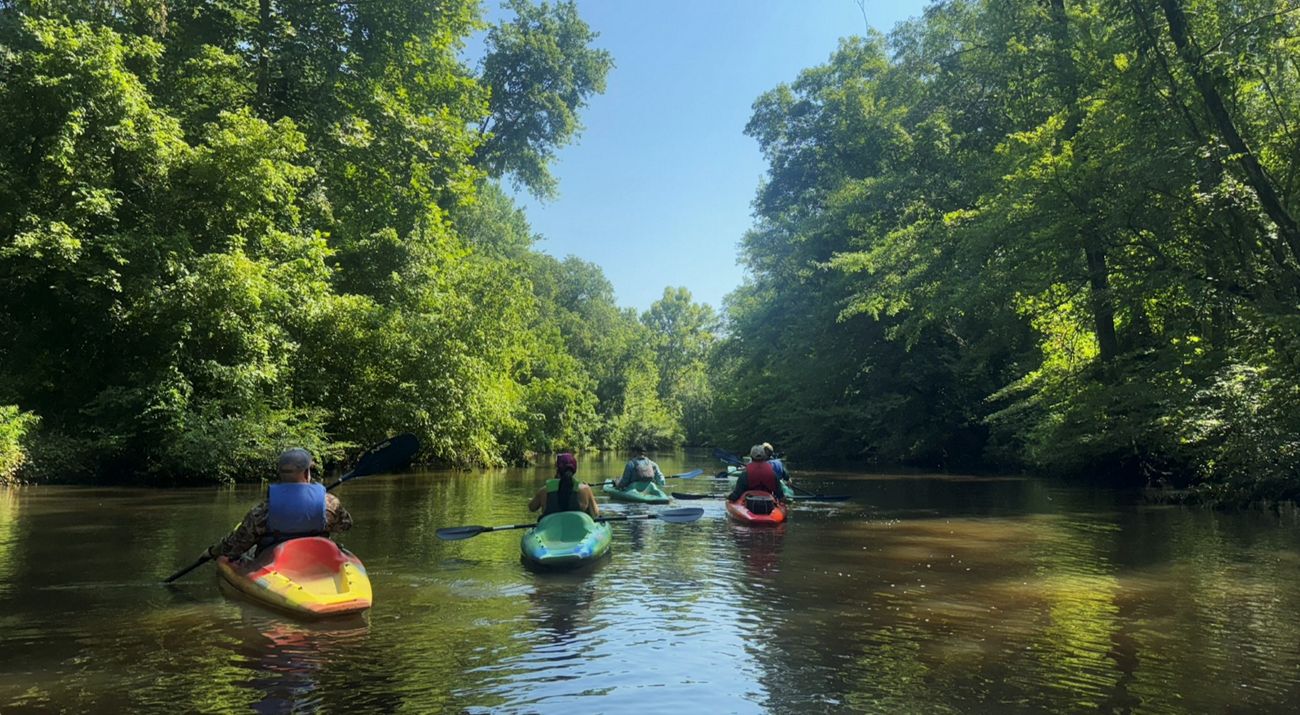Protecting the Hatchie: 1,273 Acres of Critical River Habitat Conserved in West Tennessee

Media Contacts
-
Jessica Underwood
Marketing and Media Relations Manager TN
Email: j.d.underwood@tnc.org
In 2025, The Nature Conservancy in Tennessee, TennGreen Land Conservancy and The Conservation Fund joined forces to protect 1,273 acres of ecologically rich bottomland hardwood forest and wetlands along the Hatchie and Tuscumbia Rivers in McNairy and Hardeman counties. The conservation of this land is a milestone achievement in one of Tennessee’s most treasured and threatened river systems.
Late in the fall of 2024, the Hatchie River Conservancy alerted TennGreen that the property was headed to auction in just two weeks. Time was of the essence. The tract, slated for sale in six parcels, each in separate auctions, was at risk of becoming permanently fragmented. Conservation partners negotiated a delay, secured an appraisal, made a direct offer and successfully canceled the auction.
In 2025, the property was officially acquired, funded in part by the Heritage Conservation Trust Fund, and is now under the jurisdiction of the Tennessee Wildlife Resources Agency (TWRA). This landscape will become a publicly accessible Wildlife Management Area, providing not only critical habitat but also new opportunities for outdoor recreation in West Tennessee.
Flowing freely through the hills and bottomlands of six Tennessee counties, the Hatchie River is the last unchanneled, free-flowing tributary of the lower Mississippi River. Its 238 miles wind through dense forests, canebrakes and swamps, supporting astonishing biodiversity.
The Hatchie is designated a Class I Natural River Area, the highest scenic river classification in the state. The river is also the only river in Tennessee with this designation applying to its entire length. Such recognition reflects the Hatchie’s exceptionally intact floodplain ecosystem, which serves as habitat for:
- Over 100 species of fish, including 11 species of catfish—possibly the most of any river in North America
- 50 species of mammals
- 35 species of freshwater mussels
- 250 species of birds, including critical habitat for migratory species
- Numerous reptiles, amphibians and invertebrates, some of which are found nowhere else in Tennessee
Notably, the property also supports rare species such as the Eastern slender glass lizard (Ophisaurus attenuatus longicaudus) and sits at the confluence of two important watersheds, which contain more than a dozen rare or endangered species combined.
The new Wildlife Management Area will not only enhance ecological resilience but also expand recreation opportunities across the region. The property is adjacent to a publicly accessible boat ramp and contains over ten miles of river and stream frontage, giving all Tennesseans and visitors additional avenues for paddling, wildlife watching, nature photography and environmental education.
The property also borders Big Hill Pond State Park and falls within the state’s Hatchie River and Big Hill Pond Areas of Interest for conservation. The area offers a near-pristine view of West Tennessee’s historical and ecological landscape—one that has remained largely unchanged for centuries.
This effort aligns with priorities laid out in the State Wildlife Action Plan, the Southeast Conservation Blueprint, The Nature Conservancy’s Conservation Plan and TennGreen’s own Strategic Land Conservation Plan. The land is marked by state and national partners as highly resilient, well-connected, and rich in habitat diversity—characteristics that will help species and ecosystems thrive in a changing climate.
The Hatchie River is one of Tennessee’s last great wild rivers, and protecting it shows what strong partnerships can achieve,” said Laurel Creech, Tennessee State Director for The Nature Conservancy. “Public management will safeguard its biodiversity and open new opportunities for Tennesseans to enjoy this remarkable landscape for years to come.”
Additionally, conserving this land contributes to protecting the Memphis Sand Aquifer, which supplies clean drinking water to over one million West Tennessee residents. With increased development pressure, sedimentation, and habitat fragmentation threatening this region, strategic conservation like this is more necessary than ever.
The Nature Conservancy is a global conservation organization dedicated to conserving the lands and waters on which all life depends. Guided by science, we create innovative, on-the-ground solutions to our world’s toughest challenges so that nature and people can thrive together. We are tackling climate change, conserving lands, waters and oceans at an unprecedented scale, providing food and water sustainably and helping make cities more resilient. The Nature Conservancy is working to make a lasting difference around the world in 83 countries and territories (39 by direct conservation impact and 44 through partners) through a collaborative approach that engages local communities, governments, the private sector, and other partners. To learn more, visit nature.org or follow @nature_press on X.